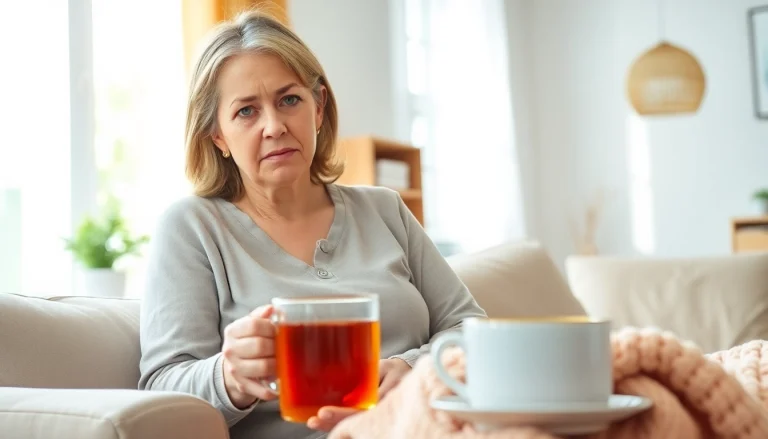
Understanding Anxiety: Causes and Symptoms
What is Anxiety?
Anxiety is a natural response to stress, characterized by feelings of worry, fear, or apprehension. While it can be beneficial in certain situations—prompting us to prepare for potential threats or challenges—persistent anxiety can become debilitating. It manifests in various forms, including generalized anxiety disorder (GAD), panic disorder, social anxiety disorder, and specific phobias, each presenting unique challenges for sufferers.
Common Symptoms of Anxiety Disorders
The symptoms of anxiety can vary widely among individuals and may manifest both physically and mentally. Common physical symptoms include:
- Rapid heart rate
- Muscle tension
- Shortness of breath
- Fatigue
- Sleep disturbances
Mental symptoms often include:
- Excessive worrying
- Difficulty concentrating
- Feelings of impending doom
- Irritability
- Restlessness
Recognizing these symptoms is the first step toward effectively dealing with anxiety.
Recognizing Triggers for Anxiety
Understanding what triggers anxiety is crucial for managing it. Triggers can be external, such as stressful events or environments, or internal, such as negative thoughts and beliefs. Keeping a journal to note when anxiety occurs can help identify patterns and triggers, making it easier to develop coping strategies.
Coping Mechanisms for Dealing with Anxiety
Relaxation Techniques to Manage Symptoms
Relaxation techniques can significantly alleviate anxiety symptoms. Here are a few effective methods:
- Deep Breathing Exercises: Focusing on your breath can quickly calm the mind. Try inhaling deeply through your nose for a count of four, holding for seven, and exhaling through your mouth for eight.
- Progressive Muscle Relaxation: This technique involves tensing and then relaxing different muscle groups in your body, helping to relieve physical tension.
- Visualization: Imagine a peaceful scene or a place where you feel safe and relaxed. Engaging your senses in this visualization can distract from anxious thoughts.
The Role of Physical Activity in Reducing Anxiety
Regular physical activity is one of the most effective strategies to combat anxiety. Exercise increases the production of serotonin, a neurotransmitter that promotes feelings of well-being. Activities such as walking, jogging, cycling, or yoga can help to:
- Reduce tension and stress levels
- Improve sleep quality
- Enhance self-esteem
Even short bursts of activity can produce immediate relief. Aim for at least 30 minutes of moderate-intensity exercise most days of the week.
Mindfulness and Meditation Practices
Mindfulness and meditation are powerful tools for managing anxiety. They help ground individuals in the present moment and foster a non-judgmental awareness of thoughts and feelings. Some practical approaches include:
- Mindful Breathing: Focus on your breath, observing the sensations of inhalation and exhalation while letting go of distractions.
- Guided Meditation: Use apps or online platforms to access guided sessions tailored for anxiety relief.
- Mindfulness-Based Stress Reduction (MBSR): This structured program teaches mindfulness techniques to reduce stress and improve coping skills.
Seeking Professional Help: When to Talk to a Therapist
Types of Therapy for Anxiety Disorders
For many individuals, professional help is essential for managing anxiety effectively. Several therapeutic approaches can be beneficial:
- Cognitive Behavioral Therapy (CBT): CBT focuses on changing negative thought patterns and behaviors that contribute to anxiety. It equips individuals with tools to reframe anxious thoughts.
- Exposure Therapy: This technique gradually exposes individuals to anxiety-provoking situations in a safe environment, enabling them to confront fears without overwhelming distress.
- Acceptance and Commitment Therapy (ACT): ACT encourages individuals to accept their thoughts and feelings rather than fighting them and commit to taking action aligned with personal values.
How to Choose the Right Therapist
Finding a qualified therapist is critical for effective treatment. Consider the following tips when choosing a mental health professional:
- Check credentials and license to ensure they are trained in anxiety disorders.
- Determine if their approach aligns with your personal beliefs and needs.
- Read reviews or seek recommendations from friends or family.
- Schedule a consultation to gauge comfort and fit.
Understanding Medication Options for Anxiety
In some cases, medication can be a helpful part of an anxiety treatment plan. Common medications include:
- Selective Serotonin Reuptake Inhibitors (SSRIs): These medications increase serotonin levels in the brain and are often prescribed for various anxiety disorders.
- Benzodiazepines: These can provide rapid relief from severe anxiety symptoms but are typically recommended for short-term use due to the risk of dependence.
- Buspirone: A non-benzodiazepine anxiolytic that can help manage anxiety without the sedative effects associated with benzodiazepines.
Discussing the potential benefits and risks of each option with a healthcare provider is essential to develop a safe and effective treatment plan.
Self-Help Strategies for Dealing with Anxiety
Building a Support Network
Connecting with others who understand your experience is invaluable. Building a support network may include:
- Sharing thoughts and feelings with trusted friends or family members.
- Joining support groups, either in-person or online, providing a safe space to share challenges and strategies.
- Engaging in community activities or clubs to foster connections and reduce feelings of isolation.
Journaling as a Tool for Self-Reflection
Journaling can be a powerful self-help tool. Regularly writing about your thoughts and feelings can help clarify emotions and identify patterns that contribute to anxiety. Consider the following journaling techniques:
- Gratitude Journaling: Listing daily things you are thankful for can shift focus from anxiety to positive aspects of life.
- Stream of Consciousness Writing: Allow your thoughts to flow freely onto the page, uncensored, to release pent-up emotions.
- Goal Setting: Write about short- and long-term goals, outlining steps to accomplish them, which can instill a sense of purpose and direction.
Implementing Daily Routines for Stability
A structured daily routine can provide a sense of normalcy and control, essential for those dealing with anxiety. Strategies to consider include:
- Establishing regular wake-up and sleep times to enhance sleep quality.
- Planning meals and exercise into your schedule to promote physical and mental well-being.
- Setting aside time for self-care activities, such as reading or spending time in nature, to recharge and reduce stress.
Long-Term Management of Anxiety
Developing Resilience Against Anxiety
Building resilience is a key component of managing anxiety in the long term. Resilience involves developing the ability to bounce back from challenges and remain hopeful. Strategies for fostering resilience include:
- Practicing self-compassion by treating yourself with kindness during difficult times.
- Engaging in problem-solving techniques to find actionable solutions to stressors.
- Building a mindset of adaptability, focusing on what can be controlled to influence outcomes positively.
Monitoring Progress and Adjusting Strategies
Periodic self-reflection and assessment of strategies for managing anxiety can help to identify what works effectively. Consider these approaches:
- Track your anxiety levels over time using a journal or mobile app to identify trends and successful coping techniques.
- Regularly review and adjust self-help strategies and therapeutic approaches as necessary.
- Celebrate small victories and progress in managing anxiety, reinforcing positive changes.
Community Resources and Support Groups
Utilizing community resources can provide additional support in managing anxiety. Look for resources such as:
- Local mental health clinics offering therapy and support.
- Workshops or classes focused on anxiety management strategies.
- Online forums and social media groups that provide a platform for sharing experiences and tips.






